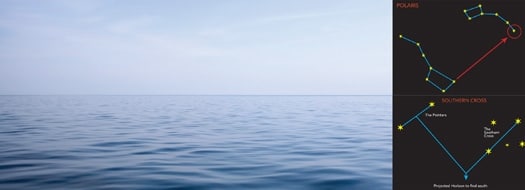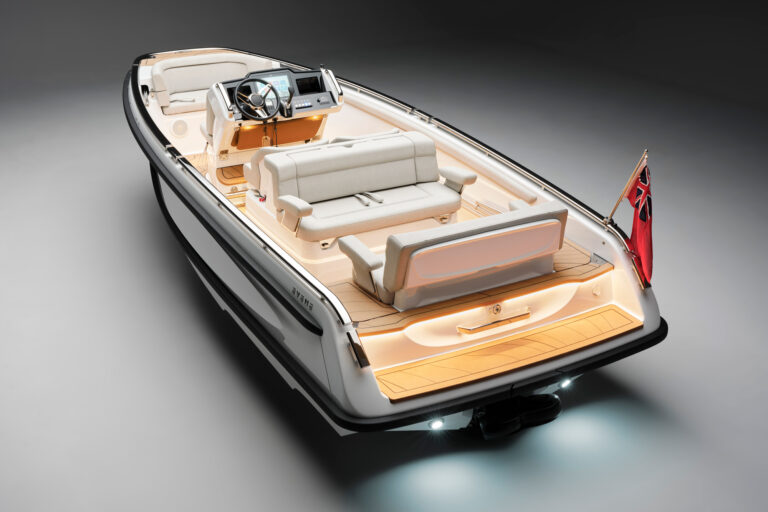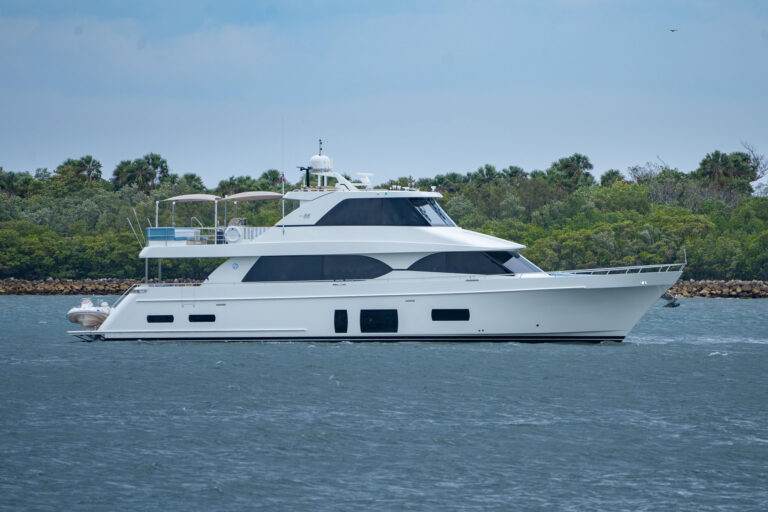
ytgmar09emergnav525.jpg
Chances are, it’s not going to happen to you. But when you’re dealing with something as stressful as a complete loss of electronics at sea, do you really want to take silly risks? Redundancies in shipboard equipment are necessary on offshore voyages-and that’s not because failures are likely or common-it’s because when they do happen, you’re usually a good couple hundred, or thousand, miles from a tow. On my boat, I have two fixed GPS units, two compasses, and two VHFs. I know it’s only Neptune’s sick sense of humor that none of my redundant equipment has ever been put to use. Unfortunately, my depthsounder, my autopilot, and my radar have each gone on the fritz at some point. I’m a coastal cruiser, though. If I were making a trans-Atlantic passage, I’d have two of everything.
But redundancy alone does not prepare you for a catastrophic loss of electronics. Everyone can benefit from some basic preparation. And for most mariners, this will be more than enough.
The Easy Way
One of the simplest things you can do to be ready for an offshore electronics failure is to assemble a back-up kit of emergency equipment.
1. Handheld GPS: there are units out there to suit every budget. Get one you like enough to play with before you actually need it. Knowing how to operate it with ease will save you some stress in an emergency.
2. Extra batteries: make sure they are (ahem!) the right size to power your handheld GPS and that they have an expiration date way, way in the future. Nevertheless, replace them annually, whether they’re used or not. It’s a peace of mind issue, because what kind of obscenities would you be screaming at the great, wide ocean if you found yourself without shipboard electronics and holding a useless GPS? You do not want to go there.
3. Satellite phone: they’re not cheap but they’re worth it. The best news, which most people don’t realize, is that you don’t need to have an expensive monthly plan just to have service in case of an emergency. Your phone should come with a SIM card, and if you’re in a jam, that card- even though unactivated-should allow you to dial 911 from anywhere on the planet. The satellite provider can triangulate on your broadcast to pinpoint your location.
4. EPIRB: this one’s pretty obvious. Activate the beacon and you will broadcast your lat and lon to search and rescue crews. It’s not navigation, but at least you’re getting found.
Take the four items mentioned above, put them in a watertight plastic bag and store them in your emergency ditch bag, which should also be waterproof.
Beyond the issue of solving your equipment failure with a less sophisticated emergency equipment kit, there are some pretty simple steps you can take to stay one step ahead of disaster in the first place. The most important factor in finding your way home after an electronics failure is having a good idea of where you are when it happens. This does not mean you have to be omniscient or telepathic-it merely requires you to keep track of your trip.
If you have a tendency to head offshore relying solely on your GPS, chances are you’re not going to remember your lat/ lon coordinates when your electronics fail. That’s why the oldest rule in the book is still the truest: Always have paper charts onboard. And having them in the chart drawer while you’re underway? Not that helpful. By all means, use your GPS for everything, but plot your course on the chart, too. Get in the old-fashioned habit of noting on the chart your arrival time at waypoints. If your last change of course was 45 minutes ago at Point A, and you know you were on a heading of 185 to reach point B, which was X miles away, you can use your speed to calculate a fairly accurate idea of where you are now.
Even close to shore, finding yourself without an electronic chart can leave you open to the kind of guessing you’d really rather not do. I once had my shipboard laptop running all of my electronic charts crash as I was departing Ocracoke, on North Carolina’s Outer Banks. And wouldn’t you know it, a place full of treacherous shoals was the one spot on the entire East Coast where I was without a back-up paper chart.
Avoiding the Hard Way
Okay, let’s say that a rogue wave sweeps your ditch bag into the drink, just as you set it down on the deck. This is where the oldfashioned methods come in handy.
Assemble some other additional tools for a second, more basic emergency navigation kit that includes:
1. A sextant (the cheap plastic kind will do)
2. A hand bearing compass
3. Pencils, pencil sharpener or a knife
4. Plotting sheets
5. A waterproof notebook
6. A Pilot Chart
7. A waterproof quartz watch
8. A nautical almanac that includes sun and star data, as well as sight reduction tables that will still be relevant long after you have ceased to be
9. A good book on celestial navigation
All of this goes into another waterproof bag or a Tupperware container. And since your ditch bag has been swept overboard, hang onto this kit for dear life.
If you haven’t kept track and you’re near a coastline with distinctive landmarks like water towers or lighthouses that are noted on your chart, plot two lines of position and where they overlap will determine your fix. Obviously, you can continue to navigate by periodically plotting your position with new fixes and using the compass to draw rhumb lines that skirt shallow areas and other hazards. Naturally, you can look for other markers on the chart (Green 13, Thimble Island) or depth readings, if your sounder is working, and use these to help determine your position.
Offshore is a whole lot trickier. There’s no doubt that learning celestial navigation is a very good idea before embarking on an ocean crossing. But there are some other ways to get home. Start by being familiar with the prevailing winds and currents for the areas you’re transiting. Weather may not make it possible for you to adhere to your rhumb line but you can plot a parallel course well to windward and keep track of your latitude by using ded reckoning. Remember, your latitude changes 1 degree for every 60 nautical miles you cover.
You could spend a lifetime learning about the stars, but maybe you’d rather be poked in the eye with a sharp stick. That’s okay-just learn some stars. You need to be able to find Polaris (the North Star). It’s crucial because it is virtually stationary, while all other stars rotate counterclockwise around it. Point your bow toward Polaris and you’re heading north. Keep Polaris off your port beam and you’re headed east. And so on. If you’re in the Northern Hemisphere, the North Star alone could get you to land. Eventually.
Polaris isn’t particularly bright, so it’s a good idea to know the Big Dipper, Little Dipper, and Cassiopeia constellations. Polaris lies between the bottom of the Big Dipper and the end of the first leg of Cassiopeia’s sideways W. Or, if you can find the Big Dipper, follow the bottom line of its cup straight across to the first star on handle of the Little Dipper-that’s Polaris.
If you’re in the Southern Hemisphere, you can use the Southern Cross constellation to locate south. Draw a line connecting the two stars at the far ends of the long axis of the cross and extend this line downward through the sky. Locate the two “pointer stars,” Alpha and Beta Centauri-they’re called the Pointers because running a line through them and continuing it straight across takes you to the Southern Cross. Draw a short line connecting the Pointers. Bisect that line in the middle and extend the bisector downward until it crosses the line extending from the Southern Cross. Where they cross is close to the South Pole and the line that would extend to the horizon beneath the South Pole marks due south.
The Hard Way
It is technically possible to navigate your way from anywhere in the world with a wristwatch and a clear view of the stars. But we’re not all salty MacGyvers.
You know that sextant and the good book on celestial navigation that you packed in your second ditch bag? If you haven’t taken a course on how to use a sextant and none of the other, easier methods bail you out of trouble, you’ll have a lot of time to learn as you drift at sea. Fear not: Necessity is the mother of invention!









